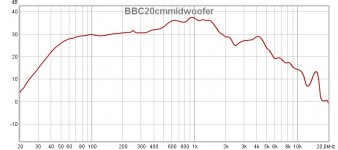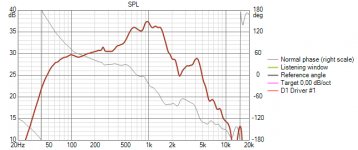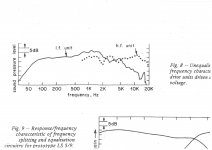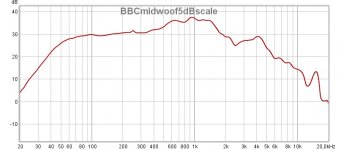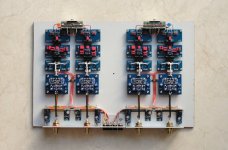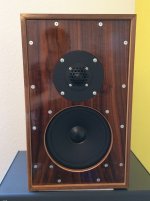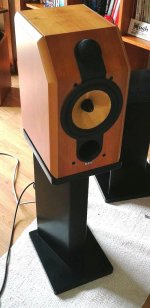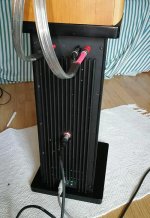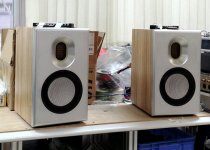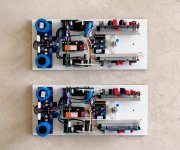Someone asked about the successor of post #13.
Actually already published in March 2019 :
B1-Turbo on a Chip
Patrick
Actually already published in March 2019 :
B1-Turbo on a Chip
Patrick
Could you publish your LS5/9 x/o schematic with component values as pfd or jpg?
Thanks in advance!
Eelco
Thanks in advance!
Eelco
Download LT Spice. It is free.
It will allow you to play with lots more things such as varying different values in the filter.
I have already done the donkey work for you.
Cheers,
Patrick
It will allow you to play with lots more things such as varying different values in the filter.
I have already done the donkey work for you.
Cheers,
Patrick
Well, I mostly use Vituixcad these days. For loudspeaker design VCad is unbeatable: you can load any .frd or txt file to sim the driver filter combo in question. The graphics are very clear also.
Unfortunately, so far I have not able to download LT Spice, but will have a look.
The most challenging part of the design is the baffle step compensation, which looks like gentle slope/shelf from 100Hz to 1000 Hz. The rest, the real LP/HP at approx 2.4kHz, should be a piece of cake. But first of all must I work my way through the BBC document.
Unfortunately, so far I have not able to download LT Spice, but will have a look.
The most challenging part of the design is the baffle step compensation, which looks like gentle slope/shelf from 100Hz to 1000 Hz. The rest, the real LP/HP at approx 2.4kHz, should be a piece of cake. But first of all must I work my way through the BBC document.
I took the liberty to draw the schematic in Vituixcad. Then I used the Vituixcad SPL tracing tool to check what the transfer function looked like when traced from the BBC picture.
Then I overlaid both the transfer function of Patricks design and the traced BBC curve.
Both from the BBC picture and its tracing, it looks as if the original slope is somewhat steeper than in Patricks emulation of the LS5/9 lowpass. The BBC picture uses a 5dB/div scale, so from 0 dB to 50db max.
Then I overlaid both the transfer function of Patricks design and the traced BBC curve.
Both from the BBC picture and its tracing, it looks as if the original slope is somewhat steeper than in Patricks emulation of the LS5/9 lowpass. The BBC picture uses a 5dB/div scale, so from 0 dB to 50db max.
Well, you can either do 2nd, 3rd, or 4th order, not ?
Or you know how to do 3.5 ?
The LS5/8 was second order with a lower crossover frequency.
The article did mention that the crossover was modified from the LS5/8.
And I read somewhere that LS5/9 was 3rd order.
Patrick
Or you know how to do 3.5 ?
The LS5/8 was second order with a lower crossover frequency.
The article did mention that the crossover was modified from the LS5/8.
And I read somewhere that LS5/9 was 3rd order.
Patrick
A friend in the EU built a LS5_9 clone, but used a different woofer (Audax HM210G6) together with the Audax TW034.
He chose a simple 12dB crossover with the tweeter 3dB attenuated, plus 6dB bass boost at 410Hz.
Just for fun, I built a balanced active crossover to replicate that.
There are also 4x XCEN Bal to SE converters to get the benefits of BAL even with RCA out.
Gorgeous woodwork. 😉
Patrick
.
He chose a simple 12dB crossover with the tweeter 3dB attenuated, plus 6dB bass boost at 410Hz.
Just for fun, I built a balanced active crossover to replicate that.
There are also 4x XCEN Bal to SE converters to get the benefits of BAL even with RCA out.
Gorgeous woodwork. 😉
Patrick
.
Attachments
Another build replacing the (different to CDM1) passive crossover of the B&W CDM1SE.
This is also balanced, with the speaker stand in black Corian housing all the electronics.
Amplifiers are 2x LM4780 per channel, inverted & bridged.
The B&W CDM1SE (2nd hand) is a real bargain.
The builder loves it to bits.
Patrick
.
This is also balanced, with the speaker stand in black Corian housing all the electronics.
Amplifiers are 2x LM4780 per channel, inverted & bridged.
The B&W CDM1SE (2nd hand) is a real bargain.
The builder loves it to bits.
Patrick
.
Attachments
Hi Patrick,
Very cool, love the idea of an modular active x-over also with the Dual JFET Follower Buffer on DIP8.
Are you willing to share the Gerber-files or do you sell the PCBs?
Joe
Very cool, love the idea of an modular active x-over also with the Dual JFET Follower Buffer on DIP8.
Are you willing to share the Gerber-files or do you sell the PCBs?
Joe
Not mine.
Speakers built by a XEN team member from a Mundorf kit.
There are things you don't see from outside.

We played some heavy drum music deliberately loud.
Yet the enclosure has no vibration whatsoever by finger touch.
Both drivers have no direct contact with the aluminium front panel.
There are damping material at all contact surfaces, including under screw heads.
I would say quite an improvement to stock design, cosmetically at least.
https://img.alicdn.com/imgextra/i1/TB1q0LNIFXXXXaxXVXXXXXXXXXX_!!0-item_pic.jpg
Patrick
Speakers built by a XEN team member from a Mundorf kit.
There are things you don't see from outside.
We played some heavy drum music deliberately loud.
Yet the enclosure has no vibration whatsoever by finger touch.
Both drivers have no direct contact with the aluminium front panel.
There are damping material at all contact surfaces, including under screw heads.
I would say quite an improvement to stock design, cosmetically at least.
https://img.alicdn.com/imgextra/i1/TB1q0LNIFXXXXaxXVXXXXXXXXXX_!!0-item_pic.jpg
Patrick
- Home
- Source & Line
- Analog Line Level
- A Modular Analogue Active Crossover Filter Solution



